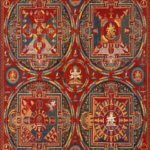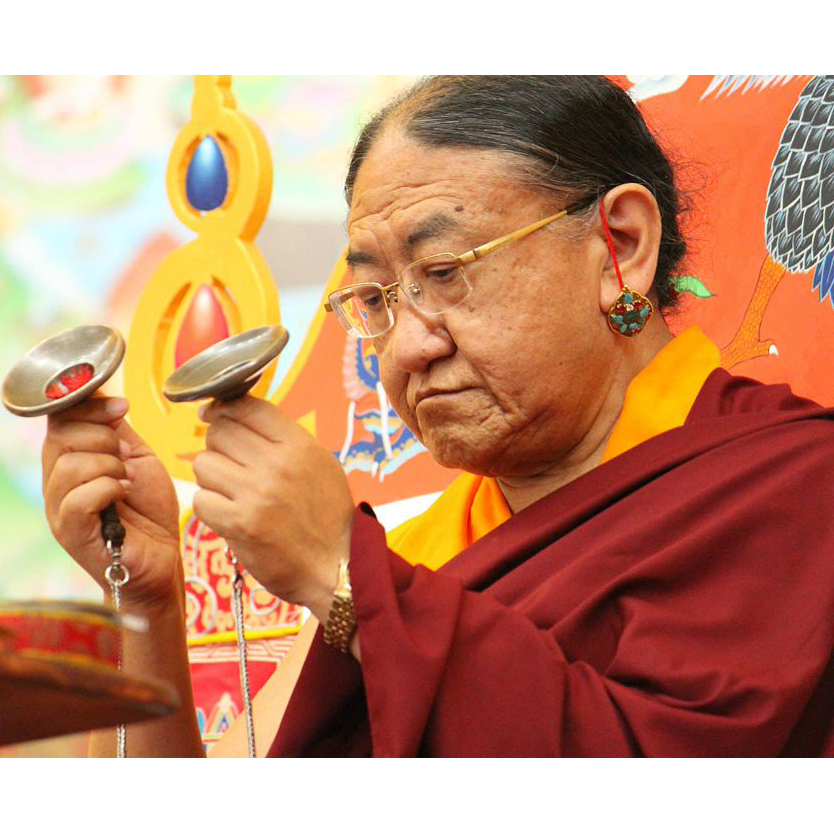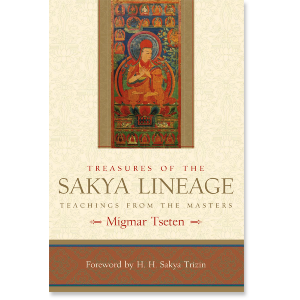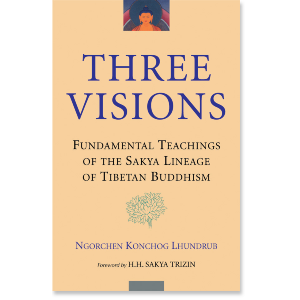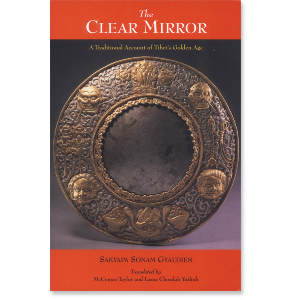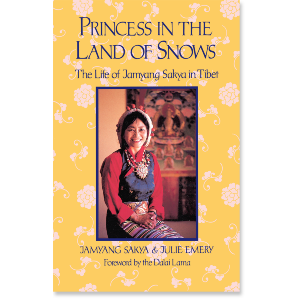| The following article is from the Spring, 1991 issue of the Snow Lion Newsletter and is for historical reference only. You can see this in context of the original newsletter here. |
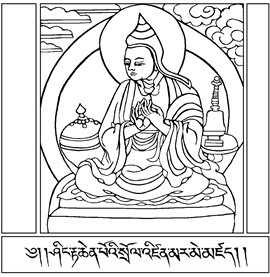
Atisha Dipamkara Shrijñana (982-1054)
Atisha—a Great Indian Master and Scholar
According to Sakya tradition, the great Indian Buddhist saint, Atisha, was traveling through Tibet in 1042, when he stopped at the sight of pale-grey earth on a nearby mountain. While his companions made camp, Atisha made obeisance toward the area of pale earth, explaining that many emanations of the great Bodhisattvas Chenrezig, Vajrapani and Manjushri would come from that spot in the future to spread religious doctrine and benefit all living creatures.
A generation later in 1073, the Sakya lineage of Tibetan Buddhism began with the building of the first Sakya Monastery on that pale-grey earth. This lineage became one of the four major Tibetan Buddhist traditions.
Building a Tibetan Monastery in North America
After the Chinese communist takeover of Tibet, His Holiness Jigdal Dagchen Sakya, lineage holder of the Phuntsok Phodrang branch of the Sakya tradition, came to the United States. His Holiness has been supervising the remodeling of a church building into a traditional Tibetan monastery that will become the new seat of the lineage in the West.
Though His Holiness is not building the new Sakya Monastery on pale-grey earth, he is building it on the solid foundation of Tibetan tradition. Every part of the monastery has religious significance, from the main beam in the shrine room, which is filled with Buddhist scriptures, down to the boards, which are cut according to auspicious lengths.
A Tibetan Master-Artist in Seattle
Painted upon the walls and ceiling of traditional shrine rooms are mandalas and images of deities, lamas, and lineage holders. To decorate the Sakya Monastery in this traditional manner, His Holiness the Dalai Lama's Religious Office has sent Tibetan master-artist Dhawa Dhondrup to Seattle.
Dhawa, who was 23 years old, attended a small settlement school for Tibetan refugees in India. Due to his early interest and skill in drawing as a child, at the age of eleven Dhawa was given a scholarship to study at a special art school in Dharamsala which had been set up by His Holiness the Dalai Lama to preserve the Tibetan style of religious drawing and painting.
There were only five other students in the school and they had already been studying for two years. The youngest of them was seven years older than Dhawa. This was the beginning of a rigorous course of training which was to last nine years and to separate him from his family, except for short annual visits.
Dhawa's teacher at the Tibetan Library Thangka Painting School, Sangye Yeshe, is a monk master painter who was appointed directly by His Holiness the Dalai Lama to head this school to train young Tibetans to carry on the practice of Tibetan sacred art. Dhawa recalls his teacher as a man who has no need to use discipline with his students because he lives so gracefully that he is respected and obeyed by all of them. The school that he heads is regarded as the best training center for Tibetan fine arts outside of Tibet.
Dhawa, like his fellow students, began his training by copying drawings created by his teacher. Starting with the head of Buddha, he worked and reworked his drawings on graph paper to hone his sense of proportion. He moved on to the next drawing only when he mastered the ability to duplicate the drawing he was working on. Progressing next to the full figure of the Buddha and then to ever more complex figures, Dhawa completed the full course of 25 drawings over four and a half years.
The initial training in drawing was followed by a course in painting. For the Tibetan artist, painting is a dangerous job. Once a painting is completed it becomes a religious object and cannot be destroyed. Dhawa's teacher explained that if an artist paints poor images of the gods it will affect his life very negatively, but if he paints fine images it will bring great benefit not only to the artist, but to his whole community.
First the students were only allowed to paint pictures that had been drawn by the teacher. Later they were allowed to both draw and paint.
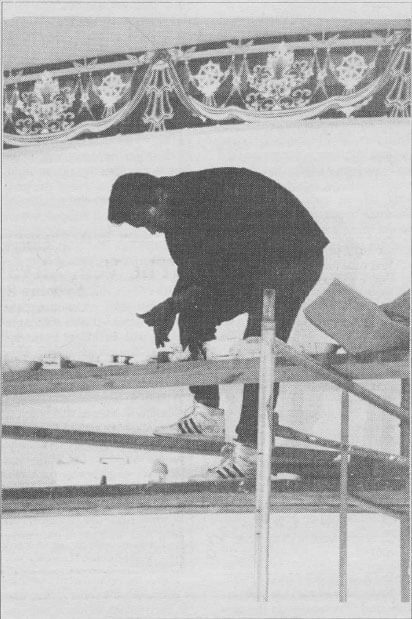
Dhawa Dhondrup painting Sakya Monastery, Seattle
Although the course of training had been planned as a five-year program, it became clear that the range of knowledge that the teacher possessed could not be imparted in that time. The course stretched to seven then to nine years.
Due to Dhawa's dedication and skill in this art form, he graduated at the top of his class.
The Tibetan style of painting has come from the time of the Buddha. According to tradition, one Indian king was puzzled about what gift he could make to another, much richer king. His adviser suggested that he offer a portrait of the Buddha, which would be considered more precious than any other gift.
This was the beginning of Indian Buddhist art and became the basis for a stylized, traditional type of painting. It was brought to Tibet, where different styles developed in each part of the country.
At the time of the great Fifth Dalai Lama, there was great support for this art. The style which Dhawa practices is the style most favored from that time—the Menying, or Old Medicine Style. As with the separate religious lineages, there is great respect for each art style that has developed. They are never mixed together but always preserved in their pure form.
At Sakya Monastery, Dhawa works five days a week on high scaffolding, bringing the walls to life with religious images. He says that religion is the main wealth that Tibetans have now that there is so little left of the Tibetan way of life and culture.
He feels a strong responsibility to his teacher to keep the painting tradition alive, both by practicing and teaching it. He feels an equal responsibility to Tibet to preserve its tradition and culture:
"I'm very happy to use my art in such a place as Sakya Monastery. The Monastery will benefit so many people and will have such a lasting effect. It will affect how others look at Tibetan culture and art. They will judge it by this work, so it's a great responsibility to do it well."
Dhawa is quick to express his thanks to the Tibetan government in Dharamsala which gave him this opportunity to study art and to become a caretaker of such precious traditional skills.
It is the custom in Tibetan monasteries for lay patrons to sponsor the paintings of the various mandalas, deities, and lineage holders that adorn the walls and ceiling. We at Sakya Monastery continued this tradition. All contributions are welcome. More information about donations and current projects can be found by clicking here. Thank you.

